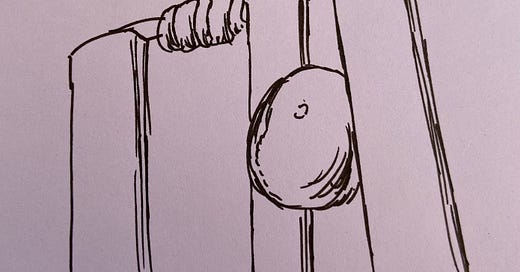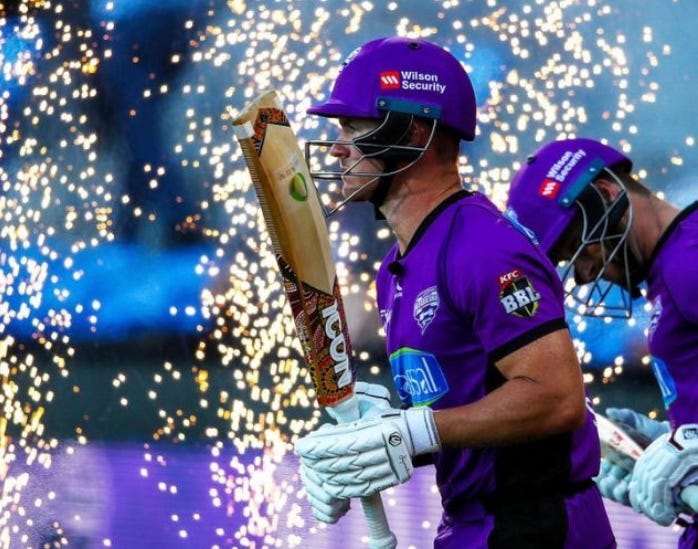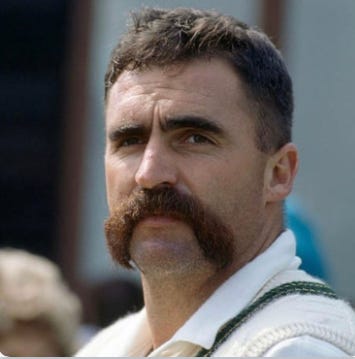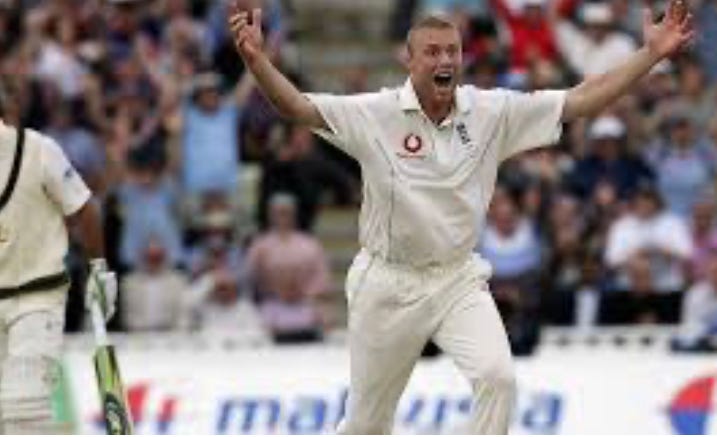I Don’t Like Cricket, I Love It
Cricket, seemingly more so than a lot of other sports, is a lot like marmite - you either love it or you hate it. Perhaps it’s something to do with the patience required whilst watching a game that, in its Test Match form, can take five days to complete (and often still end in a draw). That in itself is really unlike anything else.
Over the years, they have tried various different ways to make the game more appealing to the masses. One day internationals (50 overs per team) came first, then T20 matches (20 overs per team) and then all of the glitz and glamour associated with events like the Big Bash, the Indian Premier League and the Hundred.
These events all strive to make the sport easier to fit into a fan’s schedule, allowing people to go and watch a match after a day at work, for example and include buzz generators like fireworks and cheerleaders. They are also more full of action, with players swinging for the fences and crushing sixes and fours with great regularity as they know that they only have a reduced amount of time to get runs onto the board. In turn, this also increases the number of wickets, with players taking a swing and missing, only to see their bails come crashing off, or mistiming a swipe and getting caught out, much more often.
As well as the increased action, short form cricket also provides more opportunity for an upset to happen with ‘lesser’ teams knowing that all it can take is a few quick wickets or a small run of sixes to get a foothold in a match and take out one of the giants of the game. A glance at the happenings current version of the T20 World Cup, the event that has prompted me to write this article, is all that you need to prove this point where Bangladesh, Afghanistan and hosts the USA, have progressed to the latter stages at the expense of traditional heavyweights Sri Lanka, New Zealand and Pakistan. This makes the game more accessible across the board as supporters of all teams will feel like they have a chance of victory.
With the expansion of cricket into different forms though, the question is raised as to whether each version can actually be considered to be the same sport or whether they can only solely be measured on their own merits. Yes, the rules are largely the same in that there are six balls in an over, you have 11 men in your team and have to get 10 out in order to end an innings, and the objective is to score more runs than the other team. However, the skills required to be successful as a Test team compared to a one-day team or a T20 team are vastly different. This is also seen in the fact that certain players are far more tailored to the smash and grab nature of short-form games as opposed to the patience required for Test Match cricket. Take England’s Jos Buttler and Eoin Morgan for instance. Both are/were well established Test Match players, but neither were nearly as revered in that form of the game as they were in the reduced overs matches where they could smash the ball all over the place with much more reckless abandon.
With this in mind then, it would seem that the forms need to be looked at completely individually, and in general they largely are, with records for top run scorers and wicket takers and so on being kept separate. As I said, there is much joy to be taken in the short-form style of the game but for me, to paraphrase the old saying, it’s not quite cricket.
For me, the original Test Match form of cricket will always be the most satisfying. There is nothing quite like watching the battle between bowler and batsman over an extended period of time where the choices between when to be defensive and when to go on the attack can really brew and develop. Over the course of a 5-day match, there is an opportunity for tactics to be debated and changed as if the two teams are at war and progress needs to be made or territory defended. For Napoleon or Montgomery, see Ponting or Vaughan. It takes a special type of mind to be able to focus for this extended period of time, both as a player and as a fan watching.
I’m not quite sure exactly when or how I got into watching cricket. I remember my Dad telling me stories of him going down to Trent Bridge when he was a boy and getting in to watch the matches as my Grandpa used to help out there. I remember seeing highlights of the great West Indian teams with players like Russell and Lloyd ripping apart others. I watched clips of old Ashes battles and grew to love players like Botham and Gatting, but also appreciated the efforts of Chappell and Lillee. One of my earliest cricketing memories was marvelling at the walrus moustache of Merv Hughes. Something about it just captivated me.
Throughout my early and teenage years, I dipped in and out of cricket without ever becoming fully invested in it. It probably didn’t help that during this period England were mediocre at best and Scotland were virtually non-existent ( hence my following of the English team). There are flashes of memories of watching players like Graeme Thorpe, Jack Russell and Darren Gough, but nothing really sticks.
I do however remember a very cool looking Aussie called Pete Drinnen coming to our school when I was in Primary 2 (I think) to teach us some of the basics. With his cap, sunnies, tan and strange (to me) accent, he was definitely someone we all liked. It was only later that I discovered that he had played first class cricket for Queensland and he actually went on to coach Scotland at the 2007 World Cup.
Following Drinnen’s visit, I played a bit of Kwik Cricket before high school and I remember playing one solitary match in full gear, but there didn’t seem to be huge opportunities to take it forward and none of my friends were really interested so in the end I kind of just drifted away from it.
The summer I got really invested though, and I have been ever since, was that of 2005. At that point, England hadn’t won an Ashes series for 18 years but I remember there being a bit of a buzz about that particular team. I was living in Glasgow for university at the time and hadn’t come home that summer due to working as security at music events at the SECC, a fantastic chance to see lots of wonderful bands and heavenly for a music fiend like myself. The fact that my job was only really in evening hours, coupled with most of my friends being away for the summer and the reality that cricket at this point was still on council telly (free to air), meant that I was free to watch pretty much every ball of the series. And that is exactly what I set out to do.
In the opening Test at Lord’s, England couldn’t have got off to a much better start, bowling the Aussies out for just 190. The sense of triumph was short lived however as Glenn McGrath rattled through the English order, taking 5 wickets on the way to stopping England for 155. Even if Australia hadn’t gone on to score 384 in their second innings, I feel that the game was already lost in the minds of the English at that point and, at 1-0 down, many thought that the inevitable would happen again and the series was virtually over. Despite the loss, I sat in my living room engrossed, totally in awe of the Australian attacking trifecta of McGrath, Brett Lee and the incomparable Shane Warne.
Then came Edgbaston and oh the drama. England started off with a glorious 407, Marcus Trescothick getting a superb 90 backed up by Freddie Flintoff’s 68. They bowled Australia out for 99 runs less but were then taken down for just 182 themselves in their second innings, leading to a makeable run chase by the Aussies. Initially it looked like England would do it easily as the top order fell but then the bowlers decided they could bat, Warne getting 42, Lee an unbeaten 43 and then Kasprowicz who hit 20 before Harmison finally pounded one down the pitch for him to nick while defending himself and allowing Jones to catch. England had won by 2 runs, were firmly back in the series, and I had no nails left!
Another corker of a match ended in a draw in the Third Test at Old Trafford where, in a high scoring game (compared to the previous tests), Lee and McGrath somehow clung on at the end with Australia having had 9 men already dismissed. England may have just missed out on the victory here, but momentum had firmly swung in their favour. By this point there was no way that I couldn’t keep watching and I had virtually become a hermit in my own flat when not working.
Onto Trent Bridge and England opened with a majestic 477, Flintoff being the star of the show with 102. They then bowled Australia out for 218 (Jones taking 5 and Hoggard 3) and enforced the follow on. The Aussies restored some sense of pride by hitting 387 in their second innings but England were left needing only 129 for the victory. They didn’t make it overly easy with the top/middle order faltering slightly, but got the job done in just over 30 overs. England had done it. They had taken a 2-1 lead with only one Test remaining. The worst they could do was draw the series, but all eyes were only on victory now.
At the Oval, the overall result never really seemed in doubt with centuries by Andrew Strauss in the first innings and Kevin Pietersen in the second innings meaning that England had a solid enough base to defend. Langer and Hayden answered with centuries of their own, but time was running out and Australia only reached 4/0 in their second innings before bad light was called and the Test ended in a draw which meant that England had finally won the Ashes back.
It was an incredible summer and one that I will always remember. Anytime a clip of any of the Tests comes onto the TV, I am immediately transported back to my tiny living room in my flat in Glasgow, ignoring the summer outside and focusing on the one being transmitted through my television screen.
Heroes were made of a generation of players and England went on to win 4 of the next 6 Ashes series, including victory in Australia in 2011 for the first time in 25 years. I was watching them all, now firmly convinced that Test Match cricket was the greatest form that there is, all down to 5 brilliant matches in the summer of 2005.
If you like my writing and want to read more things football related, please subscribe to Football4Cast where I have been working to cover all things Euro 2004.









Brilliant blog Sam. I love cricket and agree the 5 day format is, for me, the best and most exciting. Geoff Boycott playing in the modern new formats, I don't think so. Bowled over. Keep the blogs coming. Thank you.